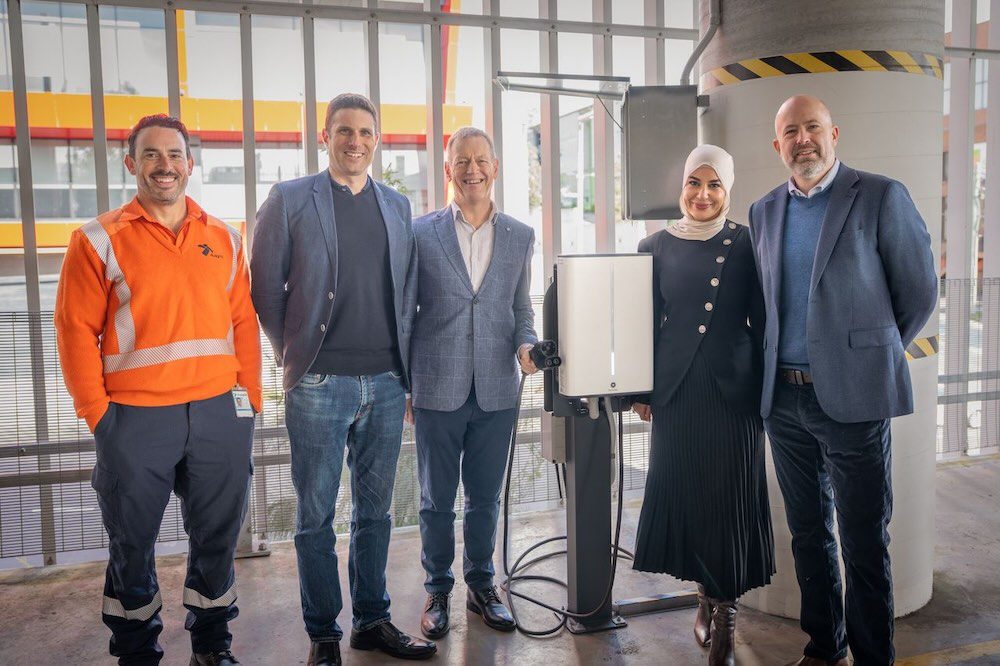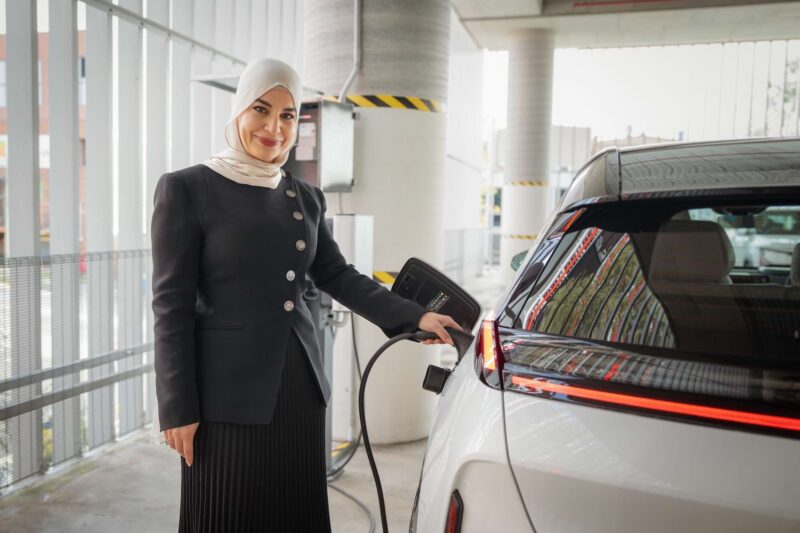Ausgrid, the biggest distributed network on Australia’s east coast, has taken a big step towards a distributed energy future by connecting its first fully operational vehicle-to-grid (V2G) charging system at a depot in Artarmon.
Ausgrid, whose distribution network spans 22,275 square kilometres across Sydney, the Central Coast and the Hunter Valley, says the V2G connection paves the way for a future where EVs play an integral role supporting the NSW grid as it transitions away from coal.
“We’re ready,” Ausgrid group executive of distributed services Rob Amphlett Lewis told The Driven on Tuesday. “That’s what this… charger represents – the fact that we’re ready, now, to accommodate V2G as a technology on our network.”
V2G is emerging as a significant add-on for electric vehicle (EV) owners, and for the broader grid, by enabling batteries on wheels to not only draw power from the grid but also to discharge energy back into it when needed.
The two-way flow of energy makes EV batteries – which typically have around six times the storage capacity of an average home battery – a potentially valuable grid management tool, while opening up a potential new revenue stream for EV owners.
V2G progress in Australia was given a big push forward in November last year when federal energy minister Chris Bowen introduced new national standards, but the rollout will depend on approvals for cables, permission from car makers, and agreements with individual network operators.
Amphlett Lewis says the company has done the foundational work necessary to understand how to integrate V2G safely and effectively and in a way that customers can begin to benefit.
The hardware installed at Ausgrid’s Artarmon Depot is a StarCharge Halo 7.4kW single phase model, which has been tested and confirmed that it complies with anti-islanding requirements during mains outages to keep personnel safe.
“The [V2G system] we’ve connected is… at our depot, so that we can … test things like plug safety. So when the network goes down… there’s no risk to the vehicle or the individuals operating it,” Amphlett Lewis says.
“We’ve got the confidence we need now that … once these technologies are [Clean Energy Council] approved, which we’re expecting to happen very soon, we can comfortably accommodate them to roll out across our network – which is exciting.”


Amphlett Lewis says that, while Australia has lagged well behind other parts of the world on EV adoption, that time-lag has allowed the technologies and systems required to support mass EV uptake to get up to speed, so to speak.
“I think in the UK there was scrambling, because there are so many EVs and the commercial products arrived before the grid was ready. We’re fortunate enough to get the grid ready as the commercial products are becoming available,” he tells The Driven.
And on the retail side of the equation, innovators like Amber Electric are raring to go with products that can transform EVs into income-generating assets and energy-management systems.
“If you’re expecting things [in the wholesale electricity market] to be volatile over the next few years, which many people do, then it’s a good opportunity to turn your vehicle into something that can help you know, really offset your bill in terms of your home energy, as well as your transport,” Amphlett Lewis says.
“This is a game-changer and we are excited to see how this technology will enable our customers to take a more active role in the energy ecosystem,” adds Ausgrid’s head of customer connections Fatima Bazzi.
“This means we can better manage network stress, improve overall grid performance, and potentially defer costly infrastructure upgrades, ultimately benefiting all our customers.”
Of course, there are many other pieces to the puzzle, including the two-way charger technologies themselves, the EV manufacturers – some of which have been reluctant to allow V2G due to concerns about battery degradation, and consumer buy-in.
But Amphlett Lewis is confident that all of the pieces will fall into place within the coming 12-18 months and V2G will get to the point where it’s “just absolutely easy” for the customer.
“We should certainly be welcoming it,” he tells The Driven. “I mean… the idea that we’ve got a million EVs rolling around NSW, and the huge battery capacity that comes with them, and we’re not using them to support integration of renewables just seems crazy.
“So we’re ready to play our role in making sure that that can happen.”

Sophie is editor of One Step Off The Grid and deputy editor of its sister site, Renew Economy. Sophie has been writing about clean energy for more than a decade.

